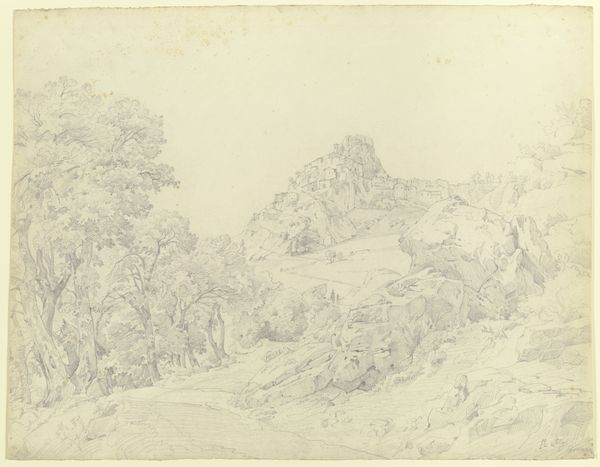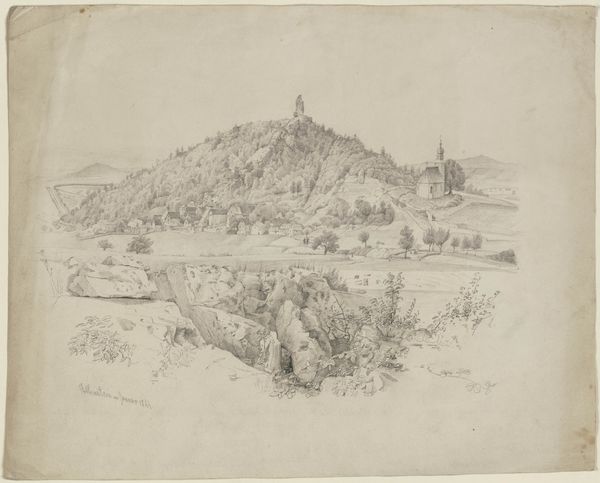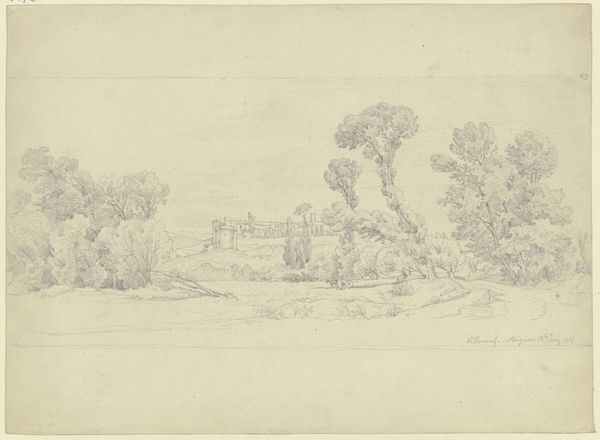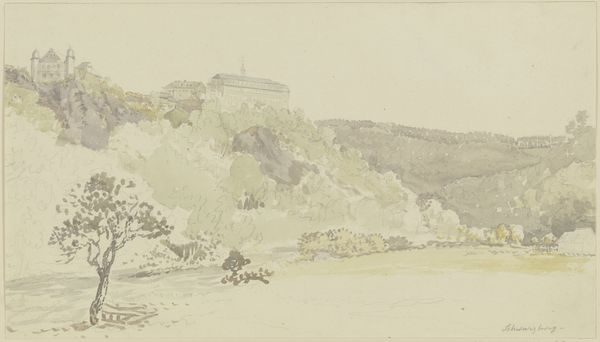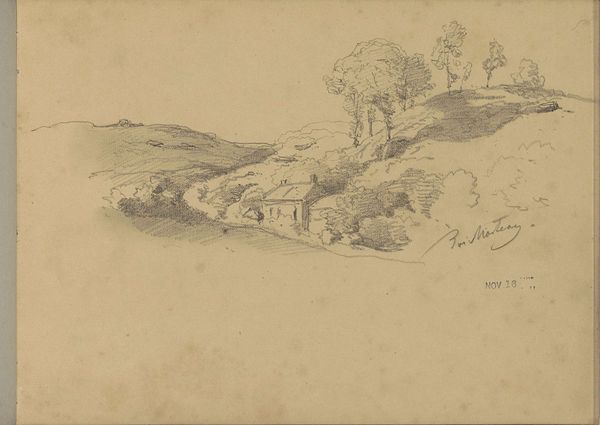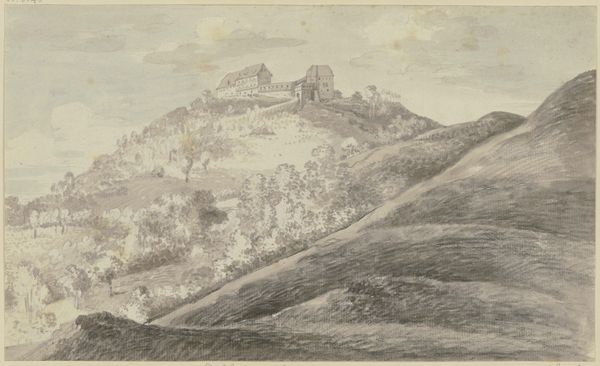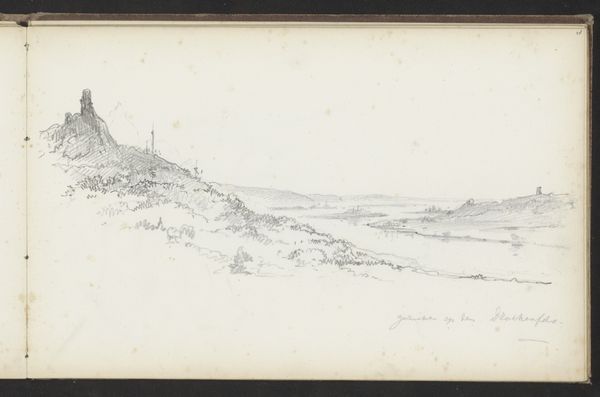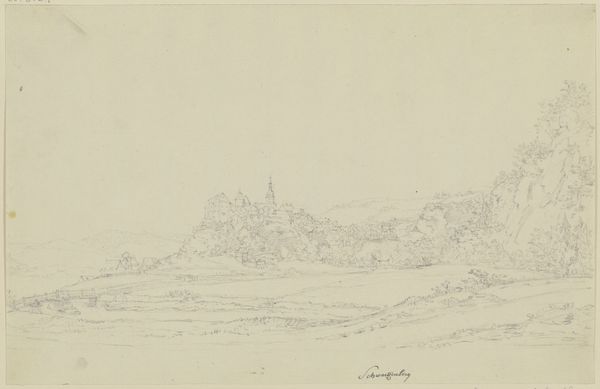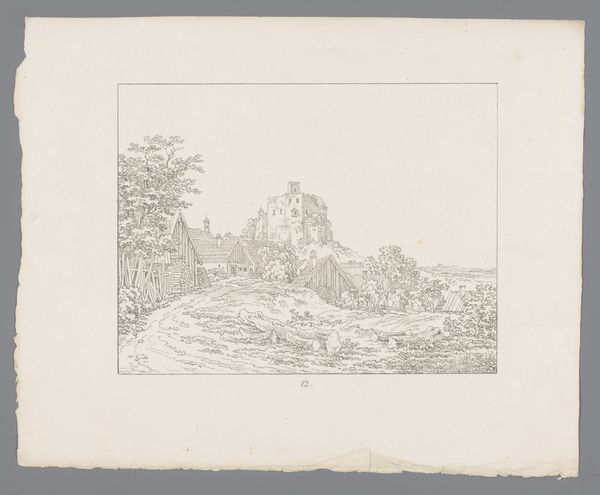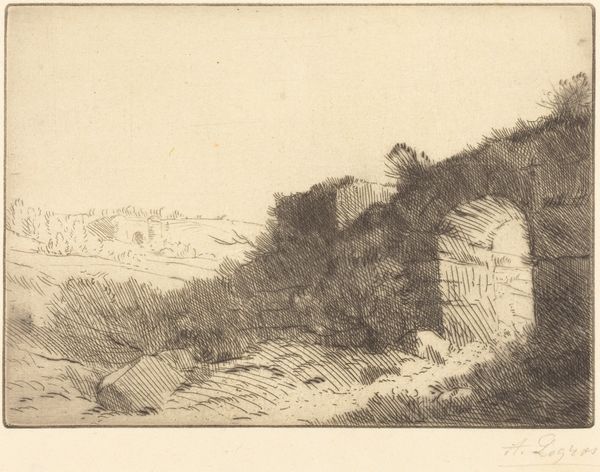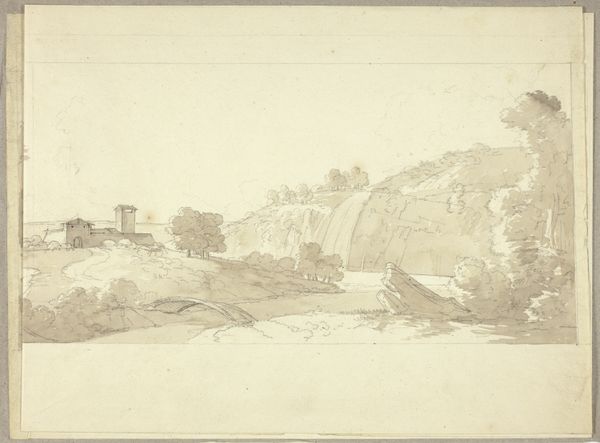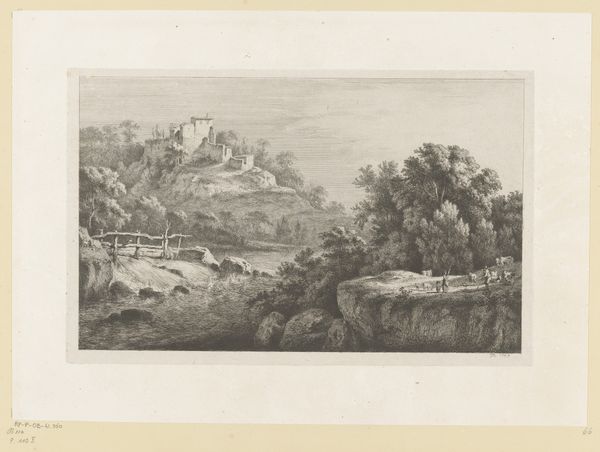
Blick auf die Wartburg von einer hügeligen Gegend aus, über der sich der Berg mit der Burg erhebt c. 1795 - 1799
0:00
0:00
drawing, etching, ink, pencil, graphite
#
drawing
#
etching
#
landscape
#
etching
#
ink
#
pencil drawing
#
romanticism
#
pencil
#
graphite
Copyright: Public Domain
Georg Melchior Kraus made this pencil drawing of the Wartburg castle from a hilly landscape in the late 18th century. It offers a glimpse into how German artists and institutions began to construct a sense of national identity through landscape imagery. The image creates meaning through a romanticized view of the German landscape. Kraus’s detailed rendering of the Wartburg castle, which is known for its historical associations with Martin Luther, invites viewers to contemplate Germany’s rich cultural heritage. In the late 1700s, there was a growing interest in German history and folklore that Kraus tapped into. Institutions such as museums and academies played a key role in promoting art that celebrated the nation's past. The drawing reflects a conservative view that equates German identity with its medieval past. To understand it better, one could research the cultural politics of late 18th century Germany and the role of institutions in shaping artistic production. It reminds us that the meaning of art is always linked to its social and institutional context.
Comments
No comments
Be the first to comment and join the conversation on the ultimate creative platform.

